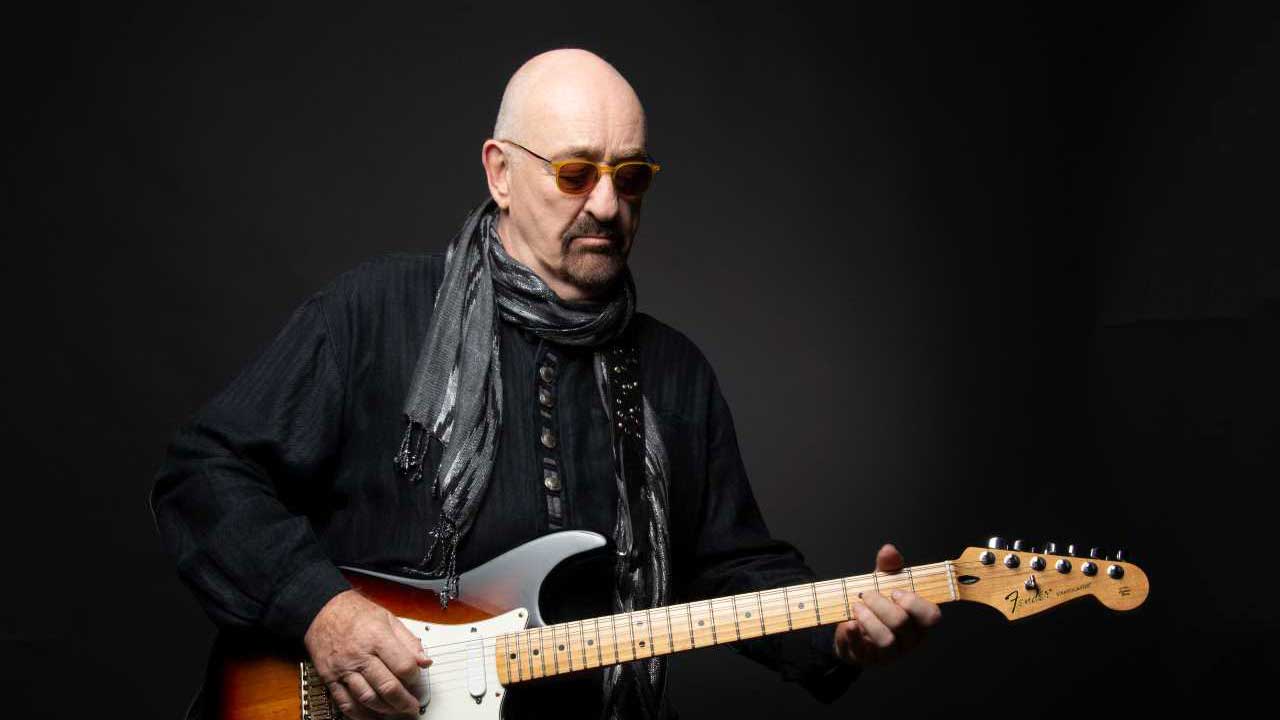If you purchase an independently reviewed product or service through a link on our website, Rolling Stone may receive an affiliate commission. Quick answer : Stream every event with a Peacock subscription , or sign up for a live TV service like DirectTV or Fubo . The 2024 Summer Olympics are officially behind us , and Paris resoundingly reminded us why the Olympics are such a special event.
It’s a long wait until the Milano Cortina 2026 Winter Olympics and an even longer wait until LA28, but it’s a very short wait until the next Olympic games. The Paralympics kick off on August 28, when the world will yet again come together for two weeks of thrilling competition. The Paralympics Opening Ceremony starts on August 28, with a parade on the historic Champs-Elysées and the Place de la Concorde.

The ceremony starts at 8 PM in Paris, or 2 PM ET/11 AM PT. According to the Olympic Committee , 184 delegations will be present, comprising over 4,000 athletes. The Paralympics have roots in an event started for wounded British WWII veterans in 1948, and the Paralympics started in earnest in 1960.
The Paralympics have coincided with every Olympics since. In Paris, there will be 22 events. The closing ceremony will take place on September 8.
NBC has carried the Olympics in the United States since 1964, which means NBCUniversal’s streaming service, Peacock, is the easiest way to catch all of the action. Peacock Premium is available for $7.99/mo, or you can sign up for an annual plan for $79.
99 and save a little over $1.00 per month. Students can also sign up for Peacock for $1.
99/mo for 12 months with verification through SheerID. If you have cable, USA, NBC, and CNBC will be carrying select events. Another option is to sign up for DirectTV Stream , which provides the live and on-demand coverage of satellite without the hardware.
Plans start at $59.99/mo, a $10 discount on the usual price. Fubo is another option for sports superfans.
It includes over 100 channels of live sports and TV, and plans start at $79.99/mo . The Paralympics consist of sports like Para archery and Blind football, as well as wheelchair versions of fencing, basketball, rugby, and tennis.
Every day of competition has medal events, and you can see the event schedule here . Below you can read about every event, with information summarized from the official Olympics site . Para archery was in the first Paralympic Games and has remained a staple ever since.
Athletes can compete standing or sitting, and compete with recurve or compound bows. The W1 class is for athletes with reduced muscle strength or range of movement, while Open is for athletes who have normal arm function but limited mobility. See t h e full schedule .
Para athletics is the biggest Paralympic event, with athletes with any eligible type of disability competing. Its closest analogue is track and field, and it includes events like running, wheelchair racing, throwing, and jumping. See the full schedule .
Para badminton players compete in pairs or singles, and there are six classes, including four standing classes and two wheelchair. Athletes compete to 21 points per game, with the best-of-three winning the overall match. See the full schedule .
Blind football is an adaptation of soccer for athletes with either partial or complete visual impairment. To keep competition fair, all athletes wear eye coverings regardless of impairment level. Each team has four players, plus a partially or fully sighted goalkeeper.
The athletes rely on their sense of hearing; the ball makes a rattling sound, and the goalie helps provide direction. Because sound is critical to play, audiences are asked to keep noise to a minimum. See the full schedule Boccia is one of two games that doesn’t have an analogue in the Olympics.
Athletes play individually, or in teams of two or three. Athletes roll a red or blue ball toward a white ball in the field, called the jack. The team that gets the closest wins.
There are four categories, depending on the nature of the disability. See the full schedule. Para canoe is similar to its Olympic counterpart, and there are two types of boats used.
There’s a canoe and a va’a, adapted from a type of boat used in Polynesian countries like Tahiti. There will be six kayak and four va’a events, and there are three classifications depending on the athlete’s impairment. See the full schedule.
Para Cycling consists of road and track cycling. Road cycling includes everything from standard bicycles to tandems, tricycles, and handcycles. The three road events are road race, time trial, and relay.
Track cycling includes time trial, individual pursuit, and tandem. See the full road schedule and the full track schedule . Para equestrian consists of a dressage competition and was first debuted in the Paralympics in the Atlanta 1996 Summer Games.
There are team and individual events, and eligible impairments range from paraplegia to vision impairments. See the full schedule . Goalball is unique to the Paralympics, with no Olympic counterpart.
It was originally designed for injured WWII veterans, and men’s goalball debuted in Toronto in 1976. Two teams of three players compete on a volleyball-sized court, with athletes rolling a ball toward a court-wide goal and the other team attempting to block. Competing athletes have visual impairments and wear blackout eye shades to ensure fair play.
See the full schedule . Para judo has identical rules to its Olympic equivalent and is for athletes with visual impairments. There are two categories comprising athletes with partial or full blindness.
The goal is to throw the opponent to the ground, and each match lasts four minutes. See the full schedule . Para powerlifting consists of one bench press competition, with no divisions by disability.
Instead, athletes are divided by weight classification. There are 20 events, 10 for men, and 10 for women. Eligible impairments include Cerebral palsy and Paraplegia.
See the full schedule . Like Olympic rowing, Para rowing consists of 2,000m races. There are individual competitions and races in teams of two and four.
Eligible impairments include Orthopaedic impairments, paraplegia, quadriplegia, hemiplegia, cerebral palsy, neurological disabilities, and vision impairments. See the full schedule. Shooting Para sport consists of rifle and pistol events.
Events are broken into standing, kneeling, or prone positions, with accommodations for wheelchair users. In the final, competitors with the lowest scores are eliminated until only two remain. See the full schedule .
In sitting volleyball, athletes sit on the floor on a smaller court with a lower net and use their arms to move around the court. Each side has six players, and matches are played to 25 points in a best-of-five format. The close-to-the-ground play makes for a fast-paced game.
See the full schedule . Para swimming consists of breaststroke, backstroke, butterfly, freestyle, and medley. Competition is open to all kinds of impairments, with classifications broken down by physical, visual, or intellectual impairment.
See the full schedule . Para table tennis is unique in that it predates its Olympic counterpart, first appearing in Rome in 1960. There are 11 classifications depending on impairment level, and athletes compete to 11 points over five sets.
See the full schedule . Para taekwondo is only the second contact sport in the Paralympics, after judo. Competitions consist of one round, with points awarded to hits on the torso.
The sport is designed for competitors with upper limb impairments, and there are five weight categories for men and five for women. See the full schedule . In para triathlon, athletes swim 750m, cycle 20km, and run 5km, half the distance of an Olympic triathlon race.
There are several classes, including a seated class, in which athletes race with a handcycle and a racing wheelchair for the cycling and running components. Vision-impaired athletes compete with a guide, while standing athletes can use prosthetic legs. See the full schedule .
Wheelchair basketball players compete on a court that’s the same size as its Olympic counterpart, including a hoop of the same height. Athletes dribble by bouncing or passing the ball after every two pushes of the wheelchair. See the full schedule .
Like Olympic fencing, wheelchair fencing consists of foil, épée, and sabre disciplines. The games are fast-moving because fencers cannot retreat or advance. Instead, the wheelchair is in a stationary position.
Sensors keep track of the score, and depending on the discipline, fencers wear an apron over their legs to ensure off-target attacks aren’t counted. See the full schedule . To get a sense of how intense wheelchair rugby is, consider the other name it’s known by: murderball.
Athletes compete using a modified volleyball, rather than the traditional oblong rugby ball, and competitors’ wheelchairs frequently collide. Wheelchair rugby draws elements of basketball, rugby, and handball. The game is unique in that teams can be mixed-gender.
See the full schedule . Wheelchair tennis made its Paralympics debut in Barcelona in 1992. The rules are very similar to Olympic tennis, with the exception that the ball can bounce twice before being returned.
Otherwise, the tennis court and net are the same dimensions. There are two classifications; Quad athletes have upper and lower body impairments, while Open athletes have full upper body mobility. See the full schedule .
.



















